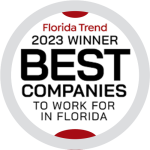Automation can save employees from repetitive work, reduce errors, and streamline processes. Once you’ve identified tasks that are good candidates for automation through process discovery, your next step is process mining. In this post, we’ll define process mining and discuss how it can move you towards intelligent automation.
What is Process Mining?
Gartner defines process mining as “a technique designed to discover, monitor, and improve real processes (i.e., not assumed processes) by extracting readily available knowledge from the event logs of information systems.” That bit in parentheses is a key part of process mining. We may think we understand our supply chain management, accounts payable, accounts receivable, and reporting processes. But often, we don’t know everything that employees are doing behind the scenes:
- Employees might be using workarounds to get past the limitations of outdated or less-than-optimal tools.
- Employees in different departments, offices, or regions might do the same work using different steps or applications.
- Legacy systems can be limited or unable to talk to other applications, creating repetitive data entry or cumbersome file- and data-transfer routines.
- Documentation doesn’t contain institutional knowledge of systems, processes, and their evolution.
Task Mining
Process mining typically involves the analysis of multiple employees and systems (and roadblocks!). Within process mining, task mining observes and analyzes how each employee completes tasks in a subsystem, based on event logs and other system tools.
Task Capture
Task capture is using technology to empower task mining. Software records how employees interact with software: keystrokes, mouse clicks, active windows, and other inputs. Both task mining and task capture roll up into process mining.
The Goal of Process Mining
Process mining discovers the hidden tasks within a workflow: data entry points, import/export routines, emails and other messaging, and so on. With that information, you gain insight into eliminating unnecessary steps and improving how work gets done. Without process mining, your organization risks creating automation that mirrors the redundancies and inefficiencies of your existing processes. No one wants that!
After analyzing existing processes, you may see many opportunities for using intelligent automation technologies like Intelligent Document Processing, Robotic Process Automation, and Intelligent Business Process Management Systems. Ultimately, the goals of process mining are:
- To capture your organization’s workflows precisely as they are.
- To define which processes can be automated to maximize the organization’s benefits.
Two Approaches to Process Mining
Now that we have defined process mining and its relationship to automation, let’s look at two approaches to process mining.
Subject Matter Expert Interviews and Impact Assessments
The employees who do the work you’re analyzing are your subject matter experts (SMEs). By interviewing or watching them as they do their jobs, you can see the most common steps in a task flow. You likely won’t get many subtle variations and occasional detours as they navigate in special situations. You also won’t immediately see how their task flows fit into the bigger picture of the process.
After the interviews, the next step is creating a process impact assessment, typically in a matrix. These matrixes show an organization’s core business processes and try to assess the impact of the different components in those processes.
For example, a Lead-to-Cash process involves lead generation, qualification, initial contact, sales, and conversion processes. The information from SMEs is valuable but often does not provide hard data on time spent, making it hard to quantify how each part affects the whole.
Integrated Process Discovery

In contrast to SME interviews, Integrated Process Discovery uses AI-powered process mining software to investigate processes, known as “task capture.” A desktop app installed on each employee’s computer records detailed data about how the user completes the process and how long each step takes. The system then automatically aggregates and assesses data from all your systems and workflows.
Weighing Which Approach Works Best
SME interviews have one clear advantage: this is a low-tech solution, and you likely already have the tools to do it. On the other hand, there are drawbacks:
- High-value employees get pulled away from important work.
- Employees might not report all steps in a process description because they assume everyone knows how to perform the task.
- In larger organizations, data-gathering and analysis steps can take months before any real process improvements begin.
- Automation opportunities may not be clear.
Integrated Process Discovery has one potential negative: an upfront investment in the system. However, the benefits far outweigh the initial costs:
- Agencies gain rapid cost savings as they quickly find problems and implement solutions.
- It’s easy to gather and analyze data at scale across campuses, divisions, regions, etc.
- Systems can scale as your needs change.
- Cloud-based systems require no equipment purchases for your existing IT infrastructure.
- Software-based process mining can feed into systems like UiPath’s Automation Hub, which can manage and prioritize automation opportunities by impact and ROI. Automation Hub also contains prewritten code libraries to make automating manual tasks even easier.






